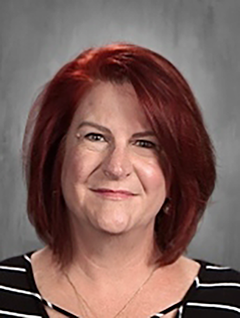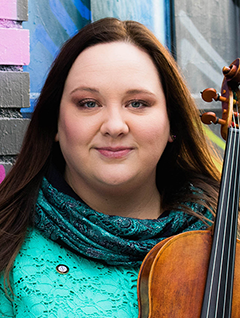 eLearning Teachers Find Joy Amid Challenges
eLearning Teachers Find Joy Amid Challenges
How do you create positivity in your class?
Jeanie Lieberenz, Kindergarten
I start each day just like I would if I was in the classroom. I encourage students to have conversations with one another, which has brought me so much joy every morning as I feel connected to each of them personally.
Rebecca Odle, 4th grade
I encourage students to support each other when someone shares out in lessons by showing what I call "sparkle fingers” to their cameras—wiggling your fingers down like a sparkler going off. It’s just a fun way to show that person that we’re listening and appreciate them sharing with us without each kiddo shouting out and talking over each other on camera!
Kelly Jensen, Kindergarten
We wrap up our day by saying goodbye with a virtual hug, fist bump, high five, or wave to each kindergarten friend. It makes all of us smile and feel connected over the screen.
Timothy Hanson, 2nd grade
If a student comes up with an amazing idea or answer or shows great work or takes a learning risk, we all open our microphones and chant their name.
Kayla Thiemann, K-5 Music
We sing and dance, and I let students volunteer to share their singing and dancing if they would like to. It is awesome seeing the students' participation, creativity, and progress!
Kimberly D’Arthenay, K-5 Art
I leave the stream on in Google Classroom so kids can share their work, and we can all comment on what we notice and love about it. It helps keep energy and engagement up and has made the class a special time together.
Every school day morning, Patrick Allen greets his second-grade students one by one and, once everyone is present and settled, introduces the first topic of the day. Enter any second-grade classroom, and you will likely see something similar, except that as an eLearning teacher, Allen’s classroom exists virtually.
“The hard part is not having the tangible aspect of all of this. You know, putting books in kids’ hands and sitting down next to them to confer, having kids sitting on the carpet at my feet,” says Allen.

Even without a physical classroom, Allen has deliberately set up rituals, routines, and structures for his students that facilitate relationship building.
“What I’m trying to do is to make sure I’m incorporating the best of what I know is good pedagogy with this idea of meeting needs virtually,” he explains.
Laura Brown, an eighth-grade language arts teacher, is another eLearning teacher hard at work at structuring her virtual classroom. To help organize her new classroom, Brown sought her students’ input. She began with an extensive survey to learn more about them, their goals, what support they might need, and their at-home learning environment.
“I discovered that some kids chose eLearning for their health, but that is not the case for every student. We have a lot more kids doing eLearning for many different reasons than I think any of us realize,” says Brown.

Next, Brown asked students to complete various prompts that began with “The greatest eLearning teacher is…,” “The greatest eLearning student is…,” and so on. After compiling her students’ responses into a set of classroom norms, Brown says she saw a couple of trends.
“I really got this sense that kids saw this as an unknown environment, and they’re counting on their peers to show up and be kind, be understanding, and be thoughtful to one another.”
Allen makes it a point to end every day building social-emotional learning skills, like teaching kids how to interact with one another in a new way. It’s a challenge, but he maintains a positive mindset.
“I think about author Debbie Miller’s advice by asking myself, what’s the best that could happen to these kids?” quips Allen. “When we turn negative, we start to give up, and I can’t give up on these 28 kids no matter what.”

Continuing to navigate learning online may become a long-term endeavor. Some teachers, such as Sue Palacios, a long-term substitute teaching fifth-grade, doesn’t see eLearning disappearing any time soon.
“I think eLearning is here to stay,” the seasoned educator says. “I think every district will have an eLearning school or another setup. It’s something everyone will have to start embracing.”
Palacios certainly had to embrace eLearning quickly. After retiring from 27 years in the classroom, Palacios left retirement to help with DCSD eLearning.
“I was surprised at how much technology I had to learn,” she comments. In a few short weeks, Palacios learned Google Meet, Google Classroom, Canvas, and the other online tools she needed to teach. “Other substitutes gave me a crash course on the technology aspect, and I’m getting myself up to speed as quickly as possible.”
Despite the occasional technology challenge, Palacios says, “the kids are very sweet and patient.”

“I thought interaction would be hard to do through Google Meets,” remarks middle school music teacher Alison Mayes. “But I’ve been very surprised by how quickly their character can shine through.”
“All the teachers I’ve worked with are working extremely hard,” says Palacios. “They’re doing their absolute best to provide the best education and to keep things as normal as possible for kids.”
Teachers even had a rare opportunity to see students in person during eLearning school supply pickups during the week of September 21 where families could get grade-specific supplies free of charge.
“It was so heartwarming to see the excitement of the students when they had the opportunity to meet their teacher face to face,” says Diane Smith, Director of eLearning. “I hear so many comments from teachers about how much they love their students and what a joy it is to be working with them.”
The eLearning journey for teachers, students, and families is just beginning. For Allen, it’s another step in the process of learning.
“If you truly think that learning is a lifelong process, that’s where we are. This is just another step in that process,” says Allen. “We just have to do the best we can for kids. We have to keep this full and rich and meaningful for them if we’re going to find success.”